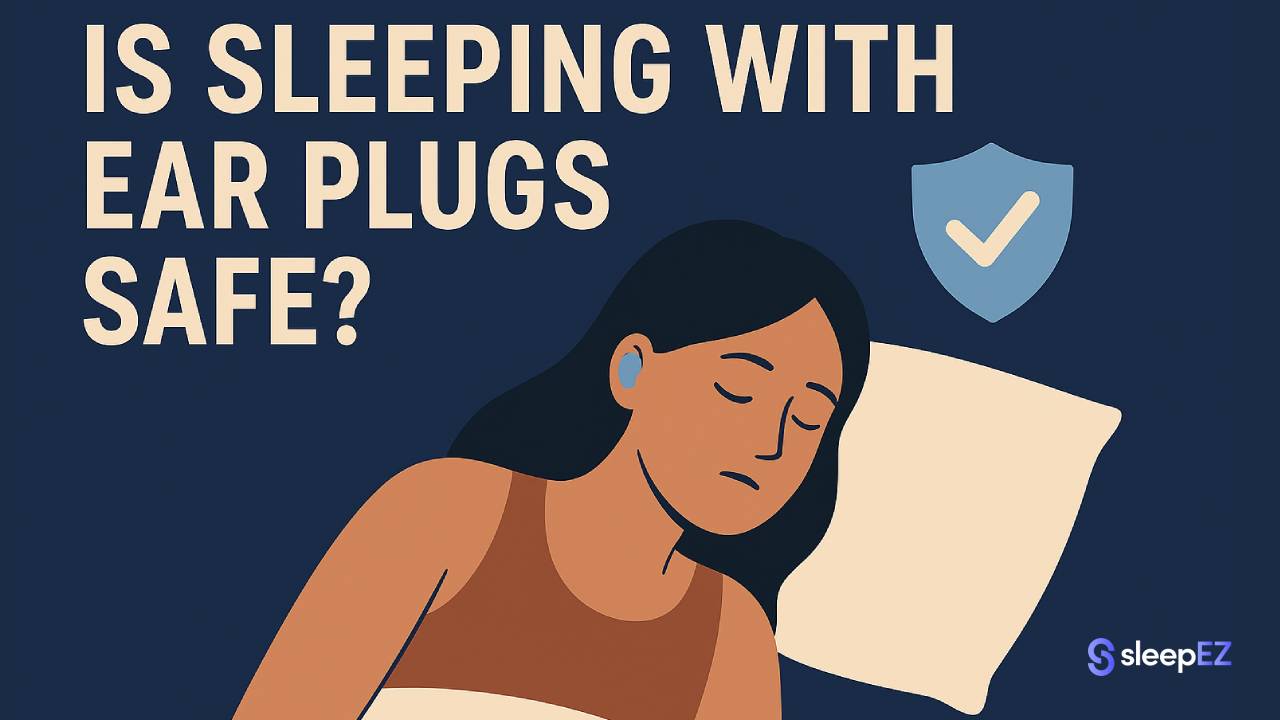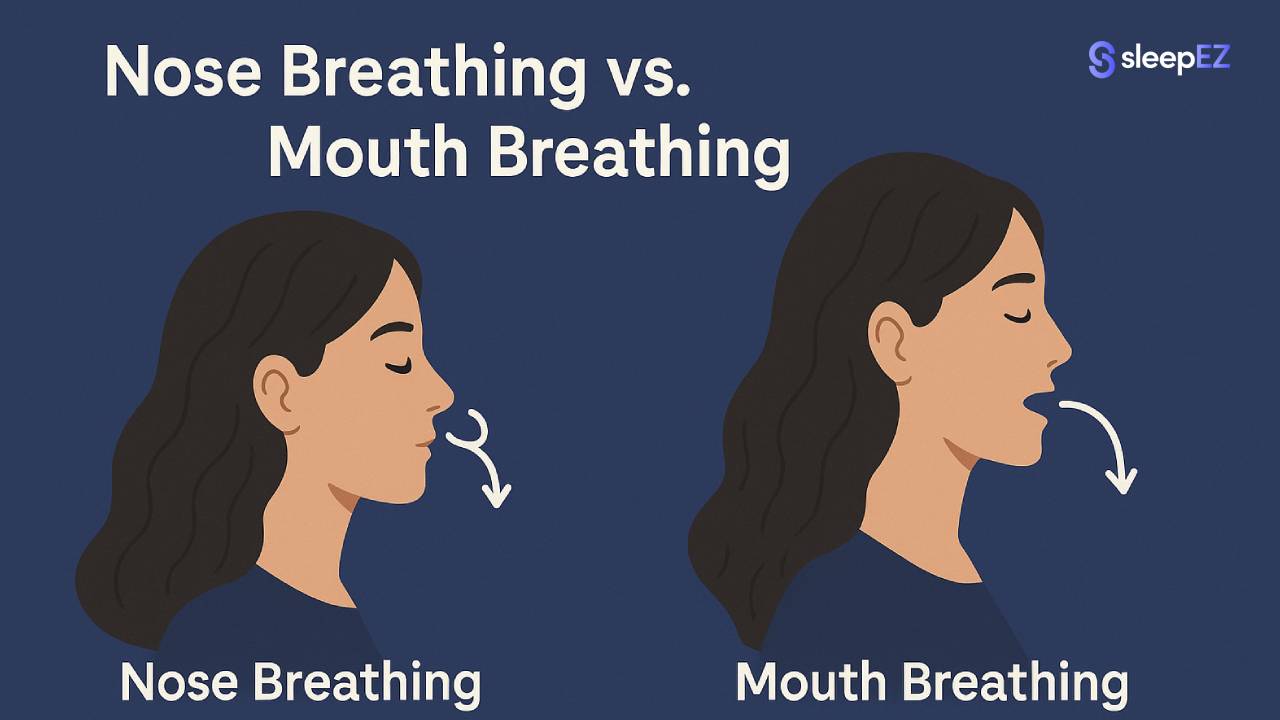Mouth taping has exploded across social media platforms, with millions of people sharing their before-and-after sleep experiences. But what exactly is this practice, and is it safe?
This guide will give you clear, factual information about what mouth taping is, how it works, and how to do it safely if you choose to try it.
Mouth taping is the practice of using a specialized tape to keep your lips sealed during sleep. This encourages your body's natural and healthier breathing pattern through the nose instead of your mouth.
How Does Mouth Tape Work?
The mechanism is simple. The tape acts as a gentle reminder to keep your lips sealed while you sleep. Your body naturally wants to breathe, so it redirects airflow through your nose.
Modern mouth tapes aren't rigid seals. They're designed to be flexible, moving with you as you sleep. You can still yawn or frown without the tape coming loose, but your default breathing stays nasal.
Why Nasal Breathing Is Better Than Mouth Breathing
Your nose is built to handle breathing in ways your mouth isn't. Here's why nasal breathing wins:
- Air filtration - Your nose filters out dust, allergens, and particles that would otherwise enter your lungs
- Humidification - Nasal passages add moisture to dry air, protecting your throat and lungs
- Temperature control - Your nose warms or cools incoming air to body temperature
- Nitric oxide production - Nasal breathing releases nitric oxide, which improves oxygen delivery and blood flow
- Better oxygen absorption - The slower airflow through your nose allows for more efficient oxygen uptake
This superior way of breathing is why regular nasal breathers often report deeper sleep, fewer throat vibrations (less snoring), and wake up feeling more energized without a dry mouth.
Mouth Taping Benefits: What to Expect
People who practice mouth taping consistently report several improvements:
- Reduced snoring - Less noise means better sleep for you and your partner
- No dry mouth - Wake up without that Sahara-like feeling in your mouth and throat
- Improved sleep quality - Fewer wake-ups and more time in deep, restorative sleep phases
- Less morning grogginess - Better oxygen flow during sleep means you wake up more refreshed
- Reduced bad breath - Saliva production stays normal when your mouth stays closed
Does Mouth Taping Actually Work?
Many users report positive results from mouth taping when used consistently. Individual experiences vary, but common feedback includes reduced dry mouth, less snoring, and improved sleep comfort.
Users often notice changes quickly, with some reporting improvements after their first night. Others find benefits develop over several days of regular use.
The basic principle is simple: when you breathe through your nose instead of your mouth, you maintain proper mouth moisture and get filtered, conditioned air. These factors may contribute to the positive experiences people report.
Results depend on using a tape that stays in place throughout the night. Products that fail or fall off won't provide the intended experience. Look for tapes with lip-shaped designs rather than generic rectangles, as they conform better to your mouth's natural contours.
Common Concerns and How to Avoid Them
Like any sleep tool, mouth taping works best when you choose the right product and use it properly. Here's what to watch for:
- Skin comfort - Some people worry about irritation, but this usually happens with household tapes or harsh adhesives. Purpose-built mouth tapes use gentle, hypoallergenic materials designed for overnight skin contact.
- Easy removal - Generic tapes can be stubborn to remove. Well-designed mouth tapes peel off smoothly without pulling at skin or leaving residue.
- Staying put all night - If a tape doesn't match your mouth shape, it might lift or create gaps. Lip-contoured designs seal more effectively because they follow your natural mouth shape.
The key is choosing a tape made specifically for sleep, not improvising with whatever's in your medicine cabinet.
How to Mouth Tape Safely: A Step-by-Step Guide
Follow these steps to try mouth taping safely:
Step 1: Consult your doctor - Talk to a healthcare provider before starting, especially if you have breathing issues, sleep apnea, or other medical conditions.
Step 2: Choose a purpose-built mouth tape - Look for a tape that is hypoallergenic, flexible, and shaped to follow your lip contours rather than a basic rectangle. The fit makes a big difference for both comfort and staying power. Avoid household tapes or bandages.
Step 3: Prepare your skin - Clean your mouth area and make sure it's completely dry. Remove any lip balm or moisturizer.
Step 4: Apply the tape - Center the tape over your closed lips and press gently. The process should be simple: peel, stick, sleep.
Step 5: Start gradually - Try it for short periods while awake first, then progress to full nights as you get comfortable.
Who Should Check with Their Doctor First?
While mouth taping is generally well-tolerated, it's smart to talk with a healthcare provider if you have:
- Nasal congestion or breathing difficulties
- Sleep apnea or other sleep disorders
- Recent facial surgery or injuries
- Skin conditions around your mouth
- Current cold, flu, or sinus issues
Also skip it if you've been drinking alcohol, as this can affect your ability to remove the tape if needed.
Most healthy adults can try mouth taping without issues, but when in doubt, ask your doctor.
The Smart Way to Try Mouth Taping
Mouth taping can be a powerful tool for better sleep, but its safety and effectiveness depend entirely on using a product specifically designed for the job.
Generic tapes and DIY solutions create unnecessary risks. The small investment in a proper mouth tape pays off in both safety and results.
Ready to experience the benefits of nasal breathing without the risks of DIY methods? Our Breathe Mouth Tape was designed with a unique lip-fit shape, gentle-yet-strong hypoallergenic adhesive, and all-night flexibility to give you the safest, most comfortable experience possible.




Leave a comment
This site is protected by hCaptcha and the hCaptcha Privacy Policy and Terms of Service apply.